Hákarl Fermented Shark Meat – The Most Stinky Delicacy of Iceland
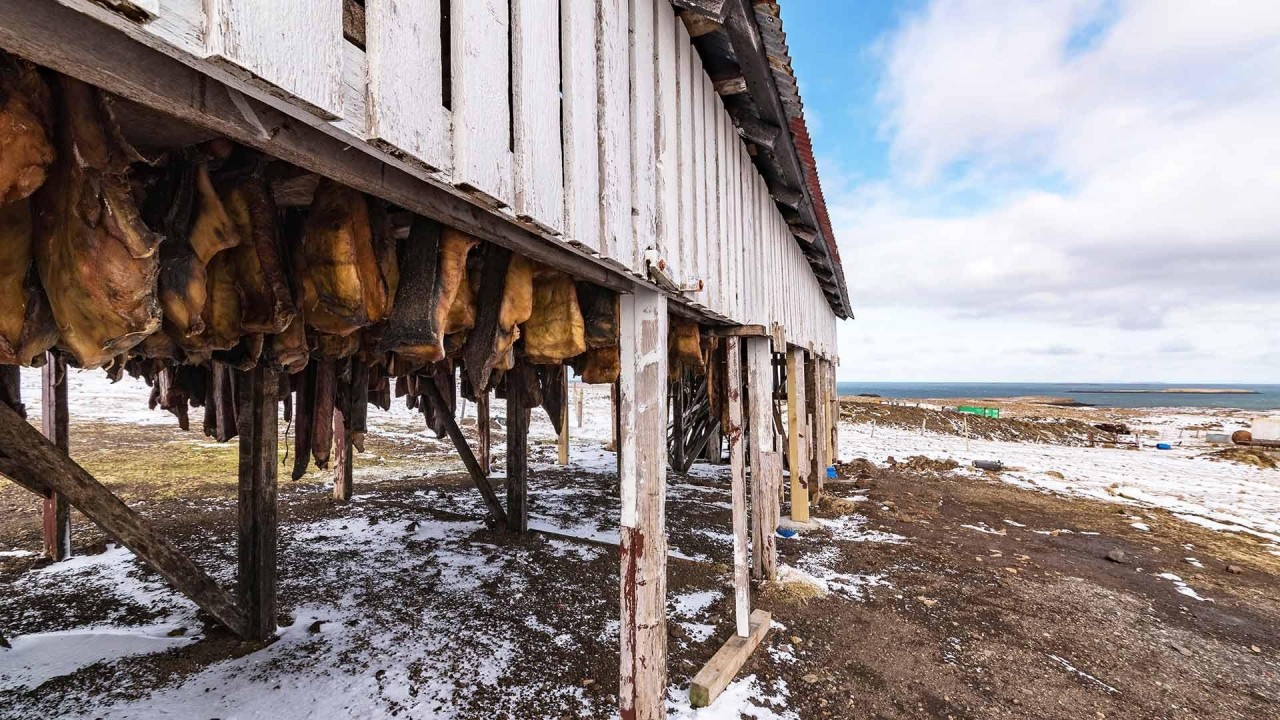 |
| Photo: Shutterstock |
Hákarl (an abbreviation of kæstur hákarl, preferred to as fermented shark in English) is a national dish of Iceland consisting of a Greenland shark or other sleeper shark that has been cured with a particular fermentation process and hung to dry for four to five months. It has a strong ammonia-rich smell and fishy taste, making hákarl an acquired taste.
Fermented shark is readily available in Icelandic stores and may be eaten year-round, but is most often served as part of a þorramatur, a selection of traditional Icelandic food served at the midwinter festival þorrablót.
The shark meat is fermented for 9 weeks before it is ready to eat and is traditionally eaten uncooked in little chunks, according to Travel Food Atlas.
It is said that, around 1600, in a fiord to the north west of Iceland, the carcass of a large shark was washed up on the shore. Instead of letting it rot, someone thought of trussing it up in ropes and leaving it to dry. And when, driven by hunger, they decided to eat it, not only did they realize that the meat was edible, but they also found it quite tasty, all things considered. Just a legend? For once, it would not seem to be so, because this is exactly the method habitually used to prepare Hákarl: the shark is hung up vertically, leaving the sun and wind to dry it, cited by Fine Dining Lovers.
Preparation of Hákarl dishes
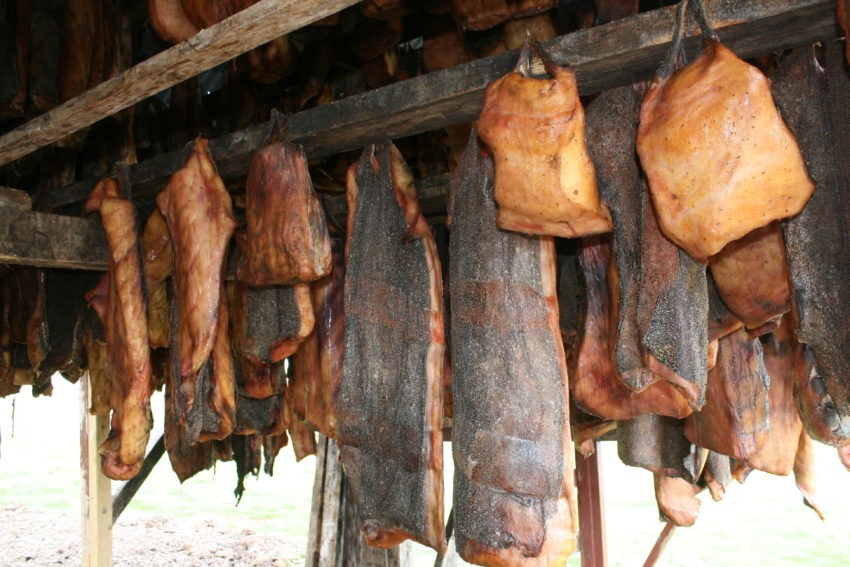 |
| Photo: Young Pioneer Tours |
Greenland sharks are the world’s longest-living vertebrates, often partially blind, and can grow up to 24 feet long. Also, their meat is poisonous. Eaten fresh, it can cause a powerful, uncomfortable intoxication. But this didn’t stop clever Vikings from figuring out that burying pieces of the massive sharks under rocks and dirt for several weeks would neutralize these toxins. After digging them up, they would hang the meat so it could age some more. The result is pungent hákarl, which is both loved and hated by Icelanders, according to Atlas Obscura.
The traditional method begins with gutting and beheading a shark and placing it in a shallow hole dug in gravelly sand, with the cleaned cavity resting on a small mound of sand. The shark is then covered with sand and gravel, and stones are placed on top of the sand in order to press the fluids out of the body. The shark ferments in this fashion for six to twelve weeks depending on the season. Following this curing period, the shark is cut into strips and hung to dry for several months. During this drying period a brown crust will develop, which is removed prior to cutting the shark into small pieces and serving. The traditional preparation process may be observed at Bjarnarhöfn Shark Museum on Snæfellsnes.
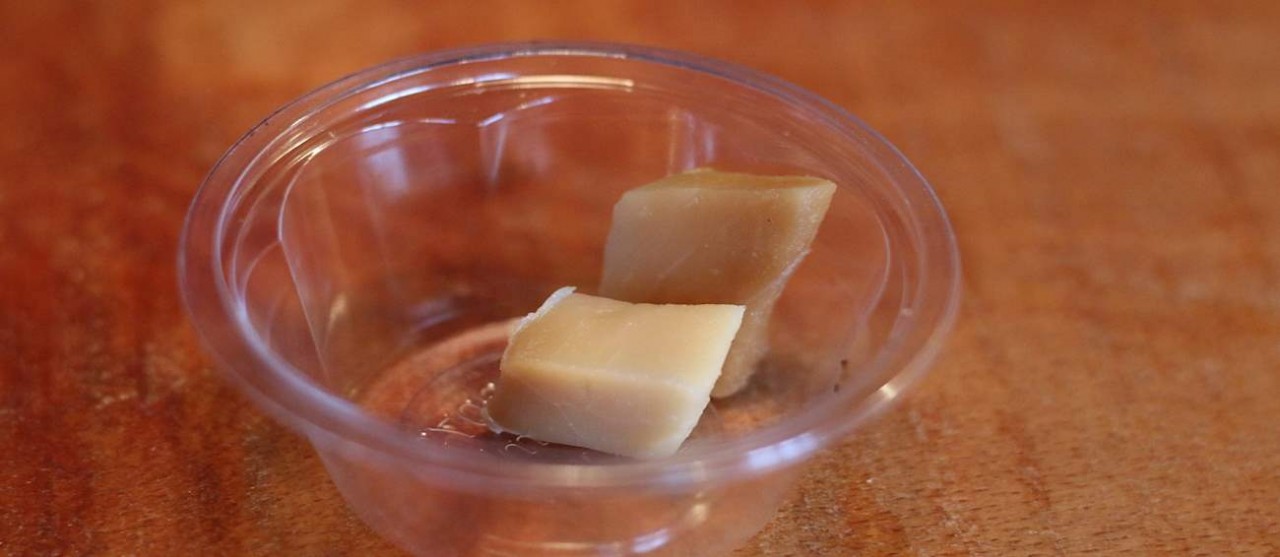 |
| Photo: Shutterstock |
The modern method is simply to press the shark's meat in a large plastic container, into which drain holes have been cut.
Where the strong smell comes from
The uric acid present in fresh Greenland sharks contributes to their ammonia-like smell. Soft, white hákarl from the shark’s body has a cheese-like texture, while reddish meat from the belly is chewier. Those who sample it describe the flavor in far-ranging terms, from fishy and mild to strong like blue cheese. Most agree that the lingering aftertaste can be described only as urine. Chunks of hákarl are often washed down with a shot of Brennivín.
When ready, Hákarl is served without its characteristic outer crust, diced into small pieces. They are eaten just as they are by habitual consumers or served in a glass-topped up with Brennivín, the Icelandic aquavit. In this way, the smell is mitigated and the approach to this food is a bit more gentle.
Hákarl – “The Stinkiest Plate In The World”
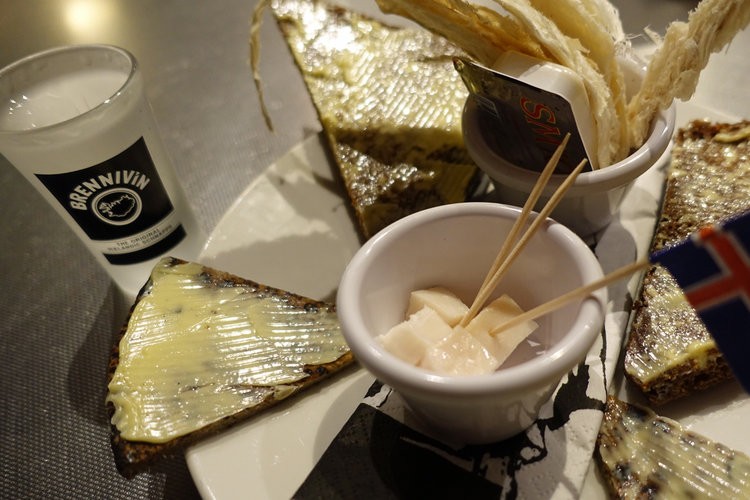 |
| Photo: Peter Jan Haas |
Chef Anthony Bourdain described fermented shark as "the single worst, most disgusting and terrible tasting thing" he had ever eaten.
Chef Gordon Ramsay challenged James May to sample three "delicacies" (Laotian snake whiskey, bull penis and fermented shark) on The F Word; after eating fermented shark, Ramsay spat it out, but May was able to keep his down. May even offered to eat it again.
On an Iceland-themed Season 2 episode of Travel Channel's Bizarre Foods with Andrew Zimmern, Andrew Zimmern described the smell as reminding him of "some of the most horrific things I've ever breathed in my life," but said that the dish tasted much better than it smelled. He described the taste as "sweet, nutty and only faintly fishy." Nonetheless, he did note of fermented shark: "That's hardcore. That's serious food. You don't want to mess with that. That's not for beginners."
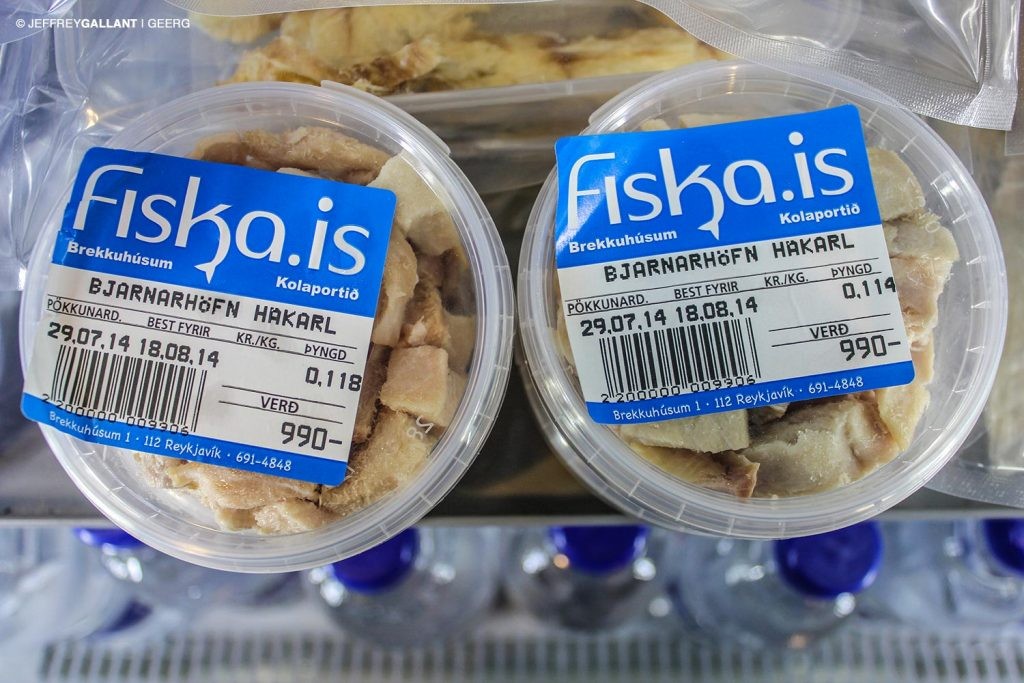 |
| Photo: GEERG |
On a Season 5 final episode of Animal Planet's River Monsters, biologist and angler Jeremy Wade mentioned that the flesh "smells of urine" that has "a really strong aftertaste, it really kicks in. It really kicks in at the back of the throat after you take the first bite." He further stated that the meat was unlike anything that he had tried before and that it was similar to a very strong cheese but with a definite fish element.
Archaeologist Neil Oliver tasted hákarl in the BBC documentary Vikings as part of his examination of the Viking diet. He described it as reminiscent of "blue cheese but a hundred times stronger."
In his series Ainsley Eats the Streets, chef Ainsley Harriott was unable to tolerate the heavy ammonia taste and described it as "like chewing a urine-infested mattress."
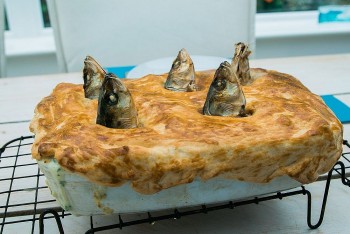 | The Weirdest British Dishes Britain has some uniquely named dishes that are a must-try for visitors to the UK. |
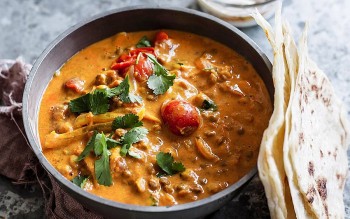 | From Fish Curry to Coconut Relish: Dishes You Should Try in Sri Lanka Making liberal use of local fruit, such as coconut and jackfruit, seafood and an arsenal of spices, Sri Lankan cooking delivers an abundance of incredible ... |
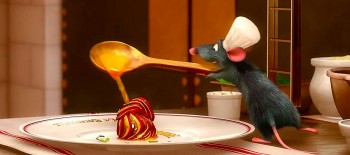 | The Real Life “Ratatouille” – The Iconic And Delicious Vegetable Dish of France From a peasant's dish to a luxury plate that is now widely served in restaurants, "Ratatouille" is an iconic and delicious vegetable delicacy that was ... |
Recommended
 Travel
Travel
Vietnam Through Australian Eyes: Land of Flavor, Warmth, and Timeless Charm
 Travel
Travel
Strategies for Sustainable Growth of Vietnam’s Tourism from International Markets
 Travel
Travel
Vietnam Strengthens Its Presence On The Global Tourism Map
 Multimedia
Multimedia
Phong Nha-Ke Bang National Park Named Top Adventure Travel Site
Popular article
 Travel
Travel
Vietnam Welcomes Record-High Number of International Visitors
 Travel
Travel
Luxury Train From Hanoi To Hai Phong To Be Launched In May
 Travel
Travel
Phong Nha Named Top Budget-Friendly Travel Destination for Spring 2025: Agoda
 Travel
Travel



